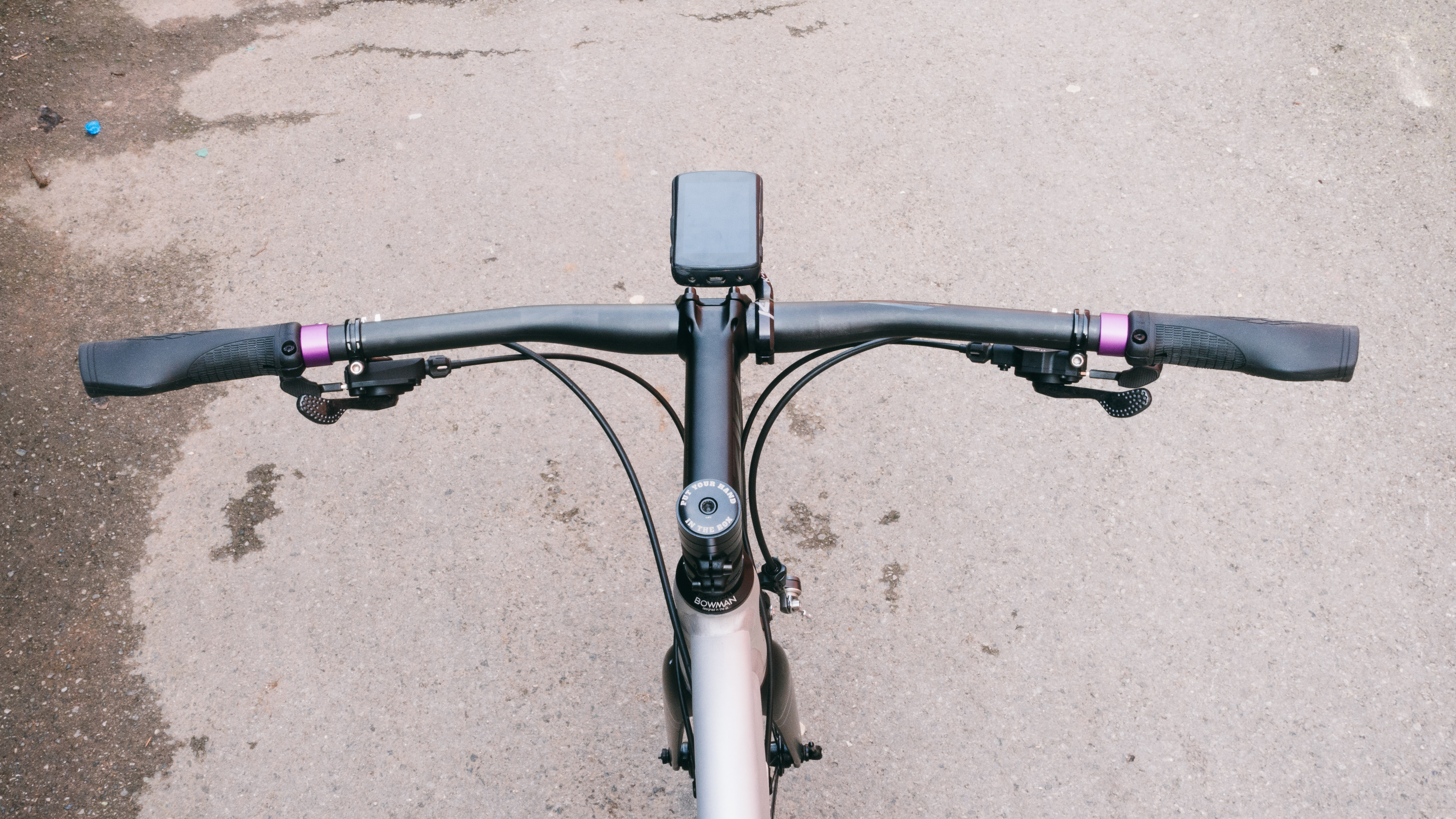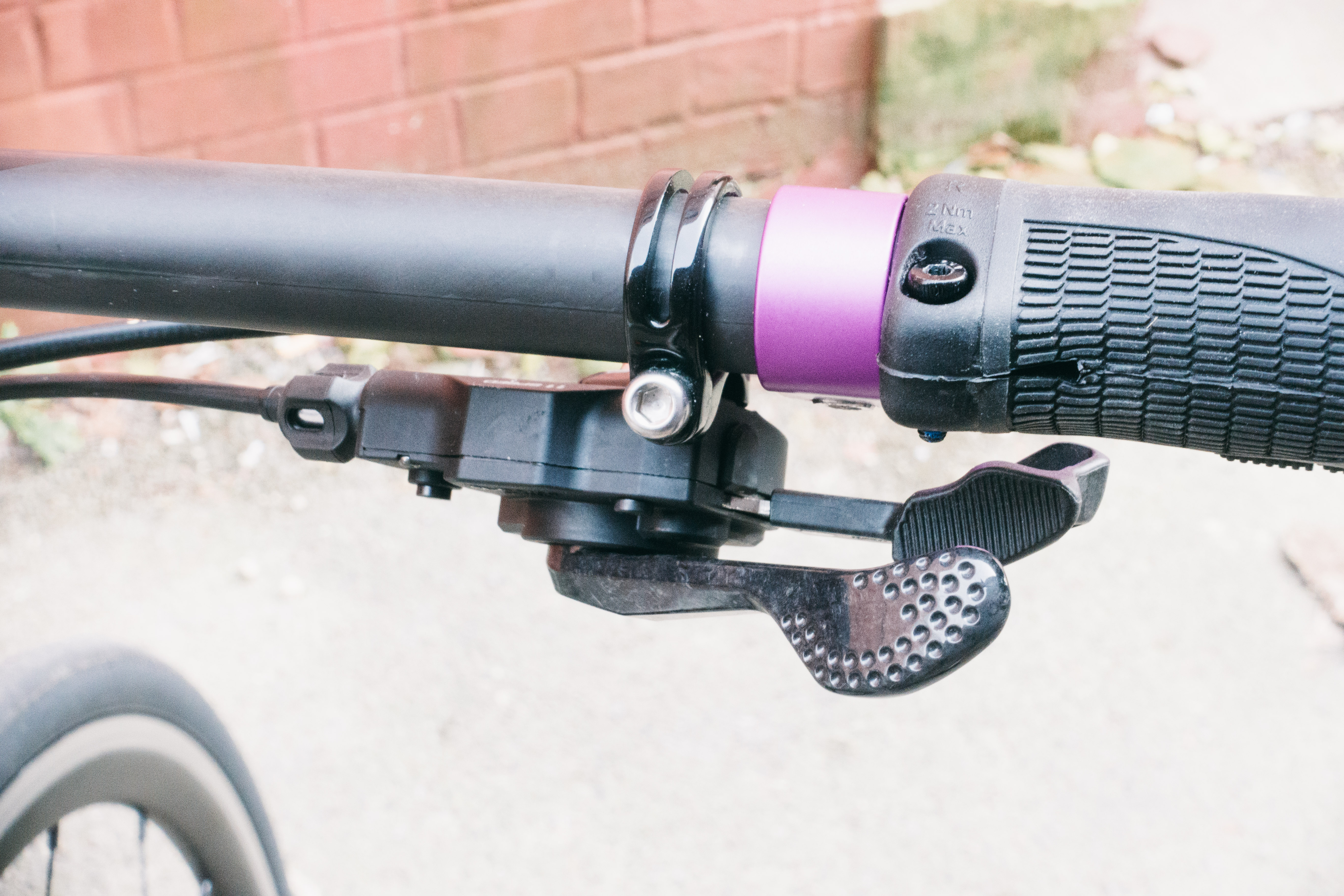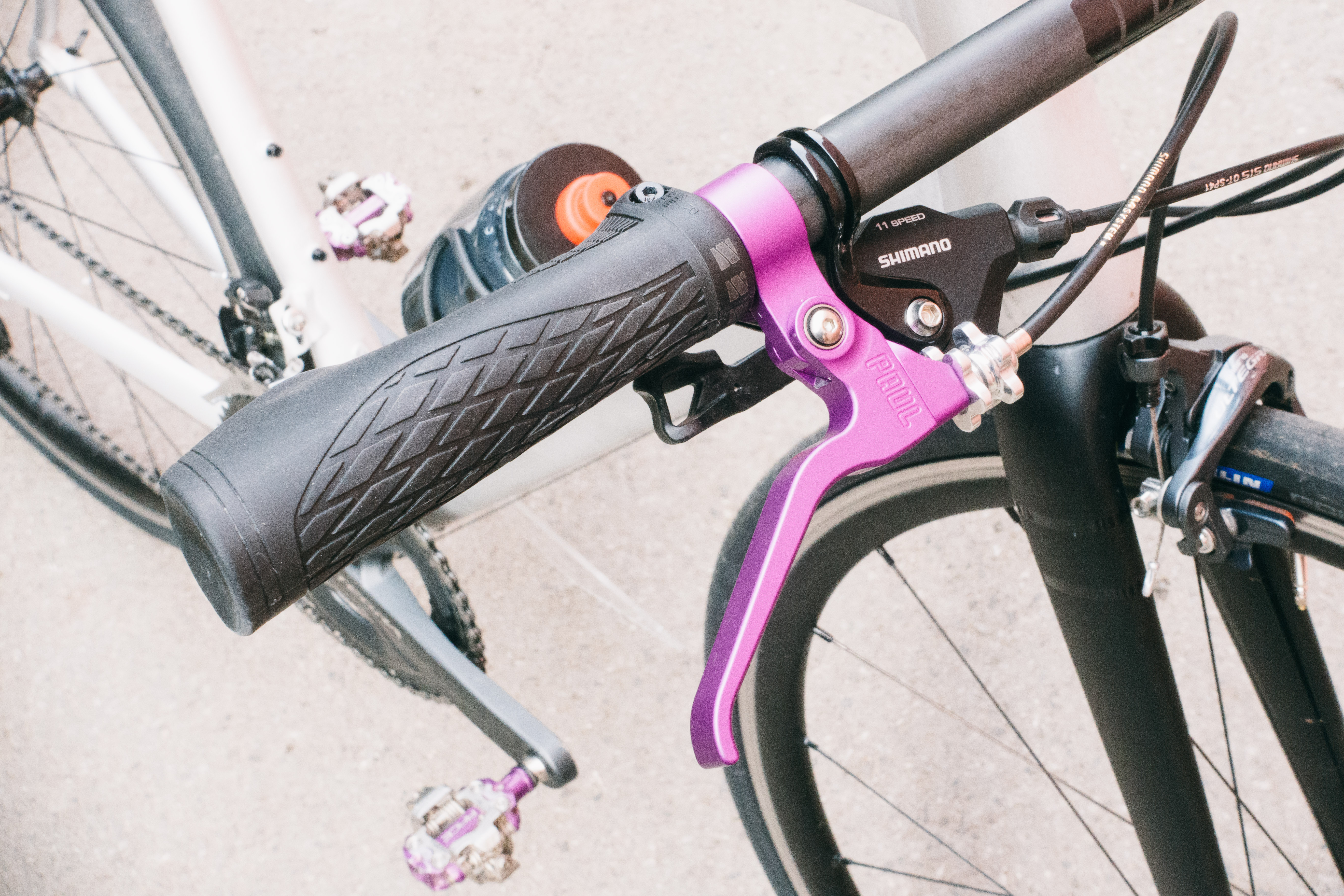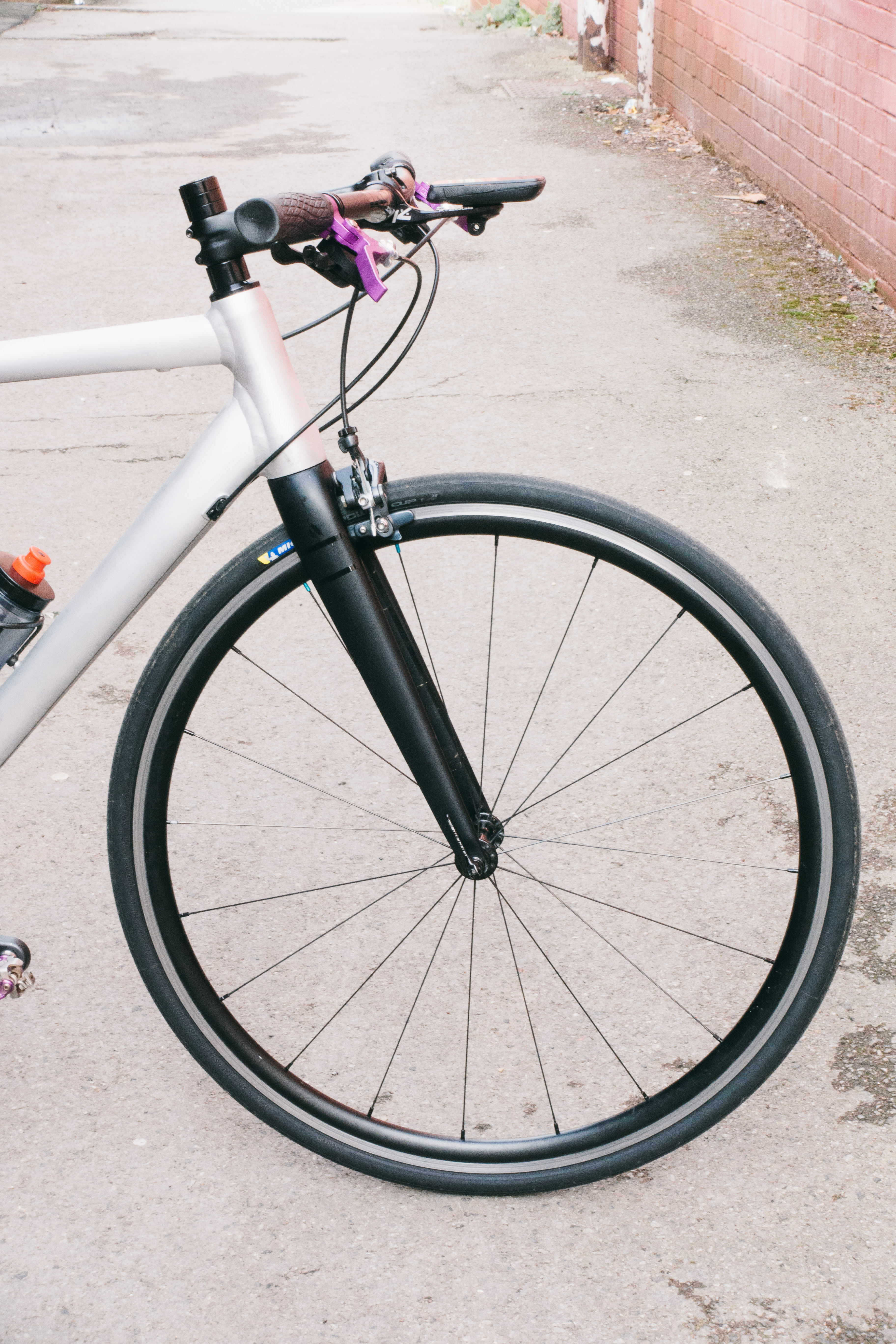
There are a tonne of reasons why you’d want a flat bar road bike. Maybe it’s just something a bit different, maybe you don’t want drop bars, maybe it’s to make the bike feel more upright for about town, or maybe simply because it looks cool. There are plenty of flat bar bikes on the market though; a great proportion of our guide to the best commuting bikes, and all of the best hybrid bikes are flat bar, but making your own brings something different to the table, especially if you use a road frame.
Converting a road bike, 'cross bike, or tourer to flat bars is a relatively simple affair, though there are certain things that you need to consider, mainly in terms of making sure road and MTB components play nicely with each other. If you get it wrong with the shifting then the worst-case scenario is that you have bad shifting, which isn’t ideal but is rarely fatal. If you don’t get the brakes right then it’s far more serious, so pay attention.
This piece is purely the how, not the why. A love letter to why I think a flat bar road bike is great is coming soon.
The Bars

This is the simple bit - you’re going to need some flat bars. The thing to bear in mind is that the clamp diameter needs to match the stem. Most road bars and flat bars nowadays have a 31.8mm clamp diameter, but older bars can vary, with 25.4mm common, as well as 26mm.
Before you buy, cross-check things are going to match, and if you’re buying a new stem (you’ll need to match the fit, which I’ll go into at the bottom) then make sure they both match, as well as fitting the diameter of your steerer tube - usually either 1” or 1 ⅛”, the latter being the most common on modern bikes.

Shifting
Shimano Cable
If you’re coming at this like I did, with an old road bike frame running a cable-actuated groupset then this bit is extremely easy. Shimano makes Ultegra and 105 tier 11sp shifter levers as standalone parts for exactly this purpose. Get a set, slap them on the bars, attach the cables (that come included and already installed in the shifters), and you’re good to go.
If you’re rocking a new mechanical 12sp 105 groupset you’re out of luck I’m afraid. You’d have to drop down to 11sp to make this work, requiring a new cassette and a new rear derailleur. Alternatively, it could be made to work with a friction shifter, but that’s a combination we suspect is unlikely to be in high demand.
It’s also worth bearing in mind that MTB and road components from the Shimano catalogue don’t play nicely together. The shifters pull different amounts of cable through, and it’ll end up a hot mess. You can swap your cassette, derailleur and shifter wholesale to an MTB equivalent if that floats your boat, but it’s a far more expensive way to go about things.
Lower down the spectrum, Tiagra and Sora flat bar shifters exist at the 10 and 9-speed levels.
As ever, consult the compatibility maps linked at the top of the page for every possible combination.
Shimano Electric
If for whatever reason you have a road Di2 drivetrain and you want to go to a flat bar then there is good news. All 10sp and 11sp Di2 are cross-compatible (except the OG di2 groupset), and Shimano has created a handy compatibility chart so you can make sure. This means that not only are 10sp compatible with other 10sp Di2 hardware, but 10sp and 11sp components can work together too. Again, pay attention to the chart and you can’t go wrong. You can even put an MTB shifter screen on your road bike if you so wish.
This doesn’t apply to 12sp though, and it’s best to think of this as a siloed unit of parts that only work with themselves. The extremely excellent website Better Shifting has a dedicated page on 12sp Di2 compatibility, as it is possible to make some 11sp parts play with some 12sp parts, but it’s more that I’m willing to go into here when it’s so comprehensively covered elsewhere.
Sram Cable
Sram, much to its credit, does compatibility very well. Flat bar shifters exist for 11sp at the Apex level, but this works with all the 11sp rear derailleurs with ‘Exact Actuation’ branding. You can also get 2x10 Apex level flat bar shifters that work with any road 10sp Sram groupset. Easy peasy.
Below 10sp things aren’t so readily possible as they are with Shimano. Various Gripshift options are available that, counterintuitively, work with Shimano systems, but you have to make sure the pull ratio matches your rear derailleur.
Sram Electric
It all works together, which is how it should be. Everything with ‘AXS’ coding in the name works with all other AXS products, so you can pair AXS flat bar shifters with any electric Sram derailleur. Even the older 11sp Sram Red, non-AXS rear derailleur has been made forwards compatible with AXS shifters. Hats off, this is the benchmark against which everything else is measured nowadays.
Friction Shifters
Here’s a rogue outlier, but one that works. You can get bar mounts for friction shift levers, the old-school ones you normally see on drop bars. Because they are non-indexed (though you can get indexed versions too) they work with everything, to a point.
You can use any friction shift lever with any setup up to 9sp and it’ll work just fine. For 10sp and above it helps to have specific shifters as the cable pull is greater; Dia Compe makes a set for example for 11sp, and they work just fine. Also, bear in mind that anything compatible with 11sp for example will work with everything lower - you could bodge some sort of 2 sprocket rear system if you so desired.
If you’re swapping a gravel bike to a flat bar and for some reason, you have a wide range gear setup - I’m talking SRAM Eagle cable here - then you’ll need very specific friction shift levers that have a larger barrel diameter to pull more cable. If this is you, just get the trigger shifters unless for some reason you’re in a particularly contrarian mood.

Brakes
Shimano Cable
The thing you need to bear in mind here is that there is a difference between ‘short-pull’ and 'long-pull’ brake systems. As you might have guessed it's down to how much cable the brake pulls. Mix a short pull brake with a long pull lever and it’ll feel very strange, but mix a long pull brake with a short pull lever and it won’t pull enough cable and you’ll be unable to stop. In short, make sure you get this bit bang on, braking is the most important thing here, if you aren't sure, ask your local bike shop for help.
Shimano road brakes are short pull, along with most cantilever brakes, while V brakes mechanical discs are generally long pull, but short pull versions exist for each type too. Models often have both versions in the same product so make sure you get the right kind.
If you’re keeping the same brakes on your bike it’s a case of simply finding a long or short pull lever. You’ll need new cables though, as flat bar brakes use a barrel, whereas road levers use a little mushroom-headed cable. Shimano aftermarket brake levers often come with cables and housing included though.
Some mixing of Sram and Shimano brakes is possible, but only in very specific combinations of products, and it’s not manufacturer-recommended. Consultation of the compatibility map at the top of the page is highly recommended.
Shimano Hydraulic
Swapping hydraulic systems is a little more tricky - Shimano doesn’t have compatibility between its road and MTB hydraulic levers, so you can’t simply attach an MTB lever to the loose end of your calliper. The best thing to do is swap the whole system wholesale, calliper, lever, and hose.
Many systems come pre-assembled too, so you just have to bolt it onto your bike and away you go, but if you need to run the hoses internally you’ll need to take it all apart again, or judiciously use zip ties.
The good thing is if you’re swapping the brakes totally you can choose any system. You could slap a Sram brake on, or any aftermarket set from a third party - just make sure you get the right mount for the calliper, and a rotor that matches the brakes and your hub. Disc brakes come in flat or post-mount options, and rotors are either 6-bolt or centre-lock, and come in a variety of diameters.
If you need to bleed them for an initial setup make sure you use the right fluid. Shimano uses mineral oil, Sram uses Dot fluid, and it varies from manufacturer to manufacturer if you go to a third party.
Sram Cable
All that is true for Shimano cable brakes also rings true for Sram. Short pull levers for short pull (road) brakes and most cantilevers, long pull levers (mostly) for V brakes and mechanical discs.
The good thing is, because it’s generally a bit complicated, most aftermarket brake levers will say what they are designed for, be it long/short, so you can cross-check with the brakes you already have.
Sram Hydraulic
As always, Sram's compatibility is a little better. It has a handy chart within the compatibility map homepage that shows which levers play nicely with which callipers, colour-coded from green (works as intended) through yellow (works, but not as well), to red (don’t do this, it doesn’t work!).
As with Shimano though, if you’re swapping the system wholesale you can choose whatever you like. Again, whatever your choice it is essential you use the right brake fluid.

Setup
Swapping to a flat bar has some fit ramifications, and while I’m no bike fitter there are some general things to be aware of. If you’re swapping to a flat bar and you make no changes to the stem you’re going to be more upright, as you no longer have the added reach of the drop bars (the distance forward between the stem clamp and the shifter hoods).
If you want to be more upright then that’s grand, but if you don’t then you’re going to need to slap a long stem on. My back-of-the-envelope calculations (stem length+road bar reach+flat bar back sweep) meant I needed a 170mm stem to get the position of my hoods. Finding a 170mm stem is pretty tricky, and I didn’t want to be quite so aggressive, so I tried a 130mm Pro Vibe stem and then a 150mm Zipp number.
Accounting for the fact that flat bars tend to be wider, and so you’re more splayed out in the arms and therefore more forward (imagine a triangle with a wider base, the apex has to get lower), a 150mm seems like my sweet spot, but your mileage may vary.
Because the stem is longer, at a negative angle you lose more height at the front end and so may need more spacers under the stem to get the bar height right for you. In short, it’s going to take a bit of fiddling about with.

A novel approach is to go for a bar like the Curve Remlaw bar, which is a flat bar but with a tonne of additional reach forward of the stem, designed specifically for flat bar conversions.
Finally, a note on levers… A longer stem, wider bars, and a higher stack of spacers under the stem means all of your levers are longer. The bars are going to exert a greater leverage on the steerer tube, and as they are longer any deflection is going to be magnified at the grips. A longer stem is also more susceptible to torsion, and if like me you have pretty low spoke count wheels they are going to be put under a greater load.
In short, the front end may feel significantly more flexy. After a first ride, I disassembled the front end to check the steerer wasn’t cracked, such was the wobble. It wasn’t but I think I am going to have to chop the bars down a touch to help stiffen up the front end. On the flip side, it’s incredibly comfy. There are no hard and fast rules, so just use common sense here - If things feel a little wobbly and you aren’t sure then the best thing to do is to take it to your local bike shop and get them to check your homework.







